#zonotrichia albicollis
Text

White-throated sparrow having a drink at the mossy spring in the woods this morning.
#pennsylvania#moss#bird#birb#white throated sparrow#zonotrichia albicollis#april#spring#mossy spring
579 notes
·
View notes
Text

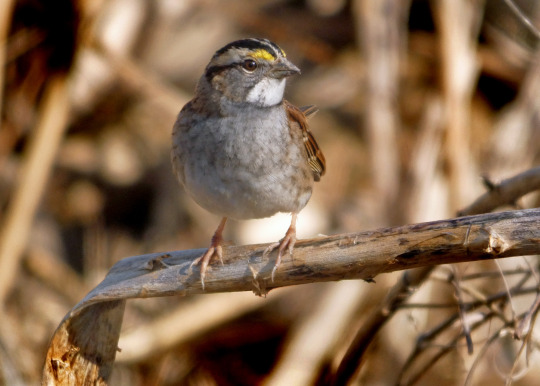
White-throated Sparrow (Zonotrichia albicollis)
February 9, 2024
John Heinz National Wildlife Refuge, Tinicum, Pennsylvania
#birds#bird#photographers on tumblr#white throated sparrow#spattows#Zonotrichia albicollis#birdblr#birb#birbs#ornithology#birblr#animals#nature#wildlife photography
611 notes
·
View notes
Text
BOTD: White-throated Sparrow

Photo: Andy Reago & Chrissy McClarren
"A common winter bird of eastern woodlots, shuffling about on the ground in loose flocks, often coming to bird feeders that are placed close enough to the shelter of thickets. It is also widespread in the West in winter, but in much smaller numbers. In summer, White-throated Sparrows sing their clear whistles in northern forests. Adults may have head stripes of either white or tan, and scientists have found some odd differences in behavior between these two color morphs."
- Audubon Field Guide
#birds#white throated sparrow#birds of north america#north american birds#american birds#birds of america#bird#sparrow#sparrows#new world sparrows#birdblr#birblr#passerines#birds of the us#birds of canada#birds of mexico#Zonotrichia albicollis
42 notes
·
View notes
Photo

White-throated Sparrow (Zonotrichia albicollis)
© Bob Walker
34 notes
·
View notes
Photo

White-throated Sparrow
52 notes
·
View notes
Photo
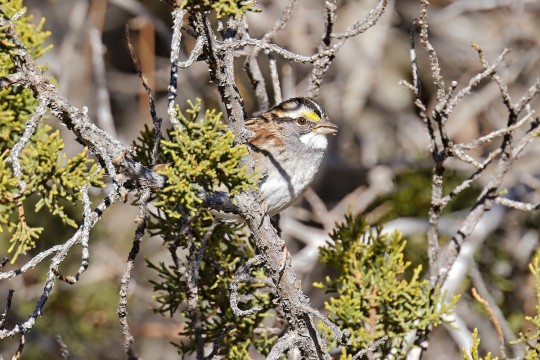
White-throated Sparrow (Zonotrichia albicollis)
© Bob Walker
7 notes
·
View notes
Text


White-throated Sparrows, both morphs
Virginia, March 2024.
#birds#bird photography#white-throated sparrow#WTSP#passeriformes#passerellidae#zonotrichia albicollis
0 notes
Photo

by Wesley Barr
1 note
·
View note
Photo


White-Throated Sparrow ( Zonotrichia albicollis)
Grand Forks, ND 5-6-2020
0 notes
Text
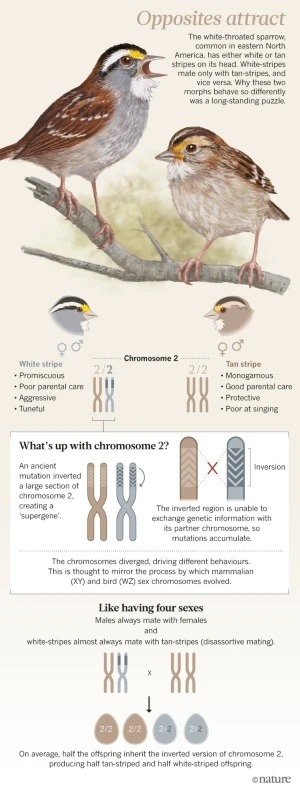
img credit Nik Spencer
I am fascinated by this!! Bird and Nature do cool thing!!
#wowowowowow#elainia tuttle#nature#birds#bird#rusty gonser#Zonotrichia albicollis#white throated sparrow#sparrow
0 notes
Text
Big news for bird names: American Ornithological Society to replace eponyms
AOS intends to change all offensive and eponymous (named after people) common names of birds in the USA and Canada.
Renaming these species will be done with involvement of the public and overseen by a new committee made up of ornithologists, social scientists, and communications and taxonomy experts.
AOS will work with the ornithological societies of Central and South America determine who in these regions will maintain stewardship of common English names.
AOS announcement: https://americanornithology.org/about/english-bird-names-project/american-ornithological-society-council-statement-on-english-bird-names
More information under the cut.
How do bird names work? Scientific names (binomials like Zonotrichia albicollis) are set by the International Commission on Zoological Nomenclature. These names are meant to be unique, unchanging, and universally recognized. Common names, on the other hand, are more fluid. The American Ornithological Society is the recognized authority on English-language common names for North American birds, published in their annual Checklist.
The larger context. Ornithologists name birds after people to commemorate those individuals, but this create problems. What do you do when a common name is racist, or when a bird is named after someone who, frankly, sucked? AOS has changed bird names for both of these reasons already.
In 2000 AOS changes the common name of Clangula hyemalis from a racist word for Native women to Long-tailed Duck (although at the time, they denied it was because of "political correctness")
2021: AOS changes the common name of Rhynchophanes mccownii from McCown's Longspur to Thick-billed Longspur. McCown was a Confederate. The push to rename this bird was a flashpoint in the #birdnames4birds movement.
Why not decide one-by-one? Sometimes it's obvious. For example, John James Audubon was a grave-robbing, slave-owning racist; birds such as Audubon's Oriole and Audubon's Shearwater are named after him. Although the National Audubon Society has voted to keep their name ("won't someone consider the branding"), many chapters have changed their names, e.g. the Chicaco Bird Alliance. Other individuals with birds named after them are less well-known or clear-cut in how much they did or did not suck. Removing all eponyms, rather than debating who sucks on a case-by-case basis, will cut down on the arguments.
How will this actually happen? It's not yet clear. Any free-for-all-poll might result in some Birdy McBirdFaces. No timeline either. But it sounds like this really is happening!
4K notes
·
View notes
Text
Migratory birds that can sense the planet's magnetic field might experience a similar irritation over being micromanaged. Researchers from the University of Western Ontario in Canada and Bowling Green State University in the US have found they can lilterally switch off their neurological navigation aid when no longer in need of it.
The research looked at white-throated sparrows (Zonotrichia albicollis) and found that they were able to activate a particular part of their brain when they needed to migrate, and put it back into a dormant mode while resting at stopover points.
This 'cluster N' brain region has previously been identified as being important to avian navigation, but it hasn't been clear precisely how it was used across species, or if it activates and deactivates automatically based on daily or seasonal cycles.
"This brain region is super important for activating the geomagnetic compass, especially for songbirds when they migrate at night," says psychology graduate student Madeleine Brodbeck from the University of Western Ontario in Canada.
Continue Reading
449 notes
·
View notes
Text
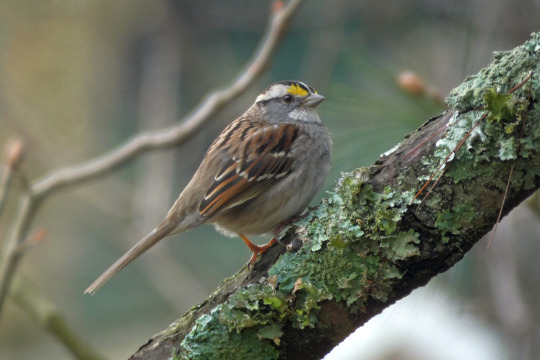
White-throated Sparrow (Zonotrichia albicollis)
March 23, 2023
Southeastern Pennsylvania
#bird#birds#photographers on tumblr#birblr#birdblr#Zonotrichia albicollis#white throated sparrow#nature#animals
279 notes
·
View notes
Note
yo I'm actually kinda curious now I'm not a geneticist and I guess you aren't either to my knowledge but what the hell does the y chromosome do? specifically in trans people on hrt and stuff I mean. to my understanding you said that trans women have everything they really need from one x chromosome, so. what's the other one up to. and also for trans men who lack a y chromosome, are they like. missing anything? hormones do 99% of the heavy lifting, right?
much love and whatnot btw. sorry about the freak in your inbox
Bit tired right now, so I hope this doesn't come out too rambly.
The one function that the Y chromosome has on sex determination is the Sry gene. This gene is responsible for testes formation, and ultimately, testosterone production. That's pretty much it. All of the other genes required to make something male or female are present, but inactive, in everyone. Hormones tell cells which ones to switch on and off, and at what times.
There's no explicit reason why Sry has to be linked to the Y chromosome. Most non-mammalian animals have different methods of sex determination, either from different sets of chromosomes, environmental triggers, or similar sex determining genes associating in appropriate ratios.
Why the Y, then?
All chromosomes, sex and somatic, are paired. Each member of the pair has the same genes on it. This is why you have two copies of most genes, and different "forms", or alleles, of a gene are possible. It's why mendelian genetics works. One of the cleanest examples is blood type. Blood types A, B, and O are all different forms of the same gene. You have two of these genes, and can therefore end up in combinations like AB, AO, etc (O in this case is no protein, A and B are slightly different forms of the same protein).
The Y chromosome is different. It's a shortened version of the X chromosome. So every gene on the Y chromosome has a pair on the X, but some genes on the X don't have a partner on the Y. And these genes have nothing to do with sex determination- the gene encoding for the red-sensitive protein in your eyes is an example of a gene in the part of the X chromosome that is "chopped off" to make the Y, and is therefore not carried by it. Every organism NEEDS at least one copy of these genes- from that point, you can upregulated that one copy and end up fairly normal.
Large chromosome deletions are fairly common, but oftentimes lethal to a developing embryo (not so fun fact, this is why the miscarriage rate is something like 70%, oftentimes so early and invisible that even the mother doesn't notice). While we can't know for certain without a time machine, the rationale is that one of these large chromosomal deletions happened to the X chromosome at some point in mammalian evolution. From that point, the only way that offspring can be passed down with that new Y chromosome in the gene pool is if you have a system that somehow forces every offspring to end up with at least one X chromosome.
Sry being linked to the Y chromosome accomplishes just that. It's an evolutionary band aid, a patch, a bodge, on a deleterious mutation. It forces the XX to XY pairing, ensuring that YY offspring don't happen.
In fact, we can see something similar happening in real time with a population of white throated sparrows: https://www.ncbi.nlm.nih.gov/pmc/articles/PMC7725849/#:~:text=Thus%2C%20not%20only%20do%20white,et%20al.%2C%202016).
A large chromosomal deletion is forcing new reproductive rules for pairing, to reduce the number of non viable offspring.
Hope this was somewhat digestible! It's a cool topic, but I'm very eepy atm
97 notes
·
View notes
Text


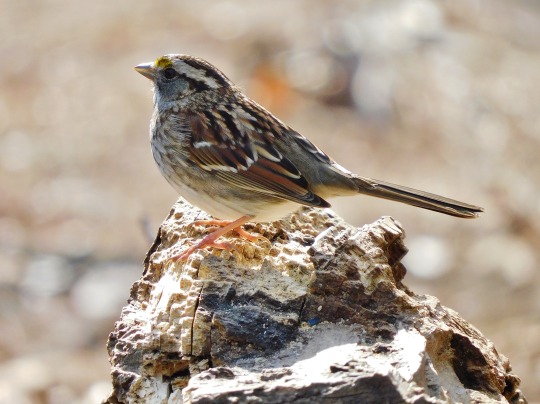
A backlit White-Throated Sparrow (Zonotrichia albicollis) on the woodpile in the late evening...
#nature#my photography#wild birds#nature photography#white throated sparrow#wildlife photography#sparrow#woodpile
25 notes
·
View notes
Text
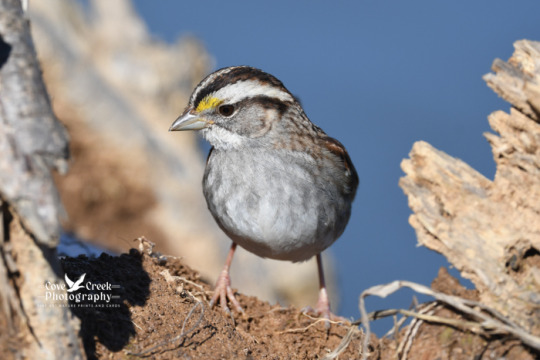
Hello, White-Throated Sparrows!
The hummingbirds have migrated south, ducks are flying overhead, and dark-eyed juncos (Junco hyemalis) began arriving a week ago. Today I spotted a couple of white-throated sparrows. All of this signals that winter is knocking at our door.
Sparrow identification can be tough. Many of our native sparrows look very similar, and often there is no glaring difference in behaviors. However, the white-throated sparrow (Zonotrichia albicollis) may be considered an exception to this identification dilemma.
The time of year is a good clue. White-throated sparrows are migratory, and spend the non-breeding season (late fall and winter) in Arkansas, as well as the rest of the eastern and south-central United States. Their pattern of arrival tends to be what I have observed over the course of the last week. White-throated sparrows start filtering in not long after the arrival of dark-eyed juncos.
Feather color and pattern also aid in identification. A white throat patch (hence the name, white-throated sparrow) between the bill and the gray breast is very apparent. In the "white-striped" form of this species, a white patch on the side of the head highlights a bright yellow spot located between the base of the gray bill and the eye. On the other hand, there is a "tan-striped" form of white-throated sparrow, and the yellow spot is less noticeable and difficult to see because the white patch near the eye is absent. Additionally, a white and black striped crown will be observed in the "white-striped" form, and a brown and black striped crown is present in the "tan-striped" form. I have observed and recorded both forms in Arkansas, in the field and at home. Anecdotally, the "white-striped" form is more prevalent every year.
The call of the white-throated sparrow is described as a song sing a that sounds like "Oh-sweet-canada-canada" or "Old-Sam-Peabody-Peabody". One thing is certain. If you hear its beautiful and distinct call, you'll know white-throated sparrows are around without ever seeing them!
#bird migration#bird photography#birdwatching#nature photography#wildlife photography#photographers on tumblr#songbirds#bird identification#winter#sparrows
20 notes
·
View notes